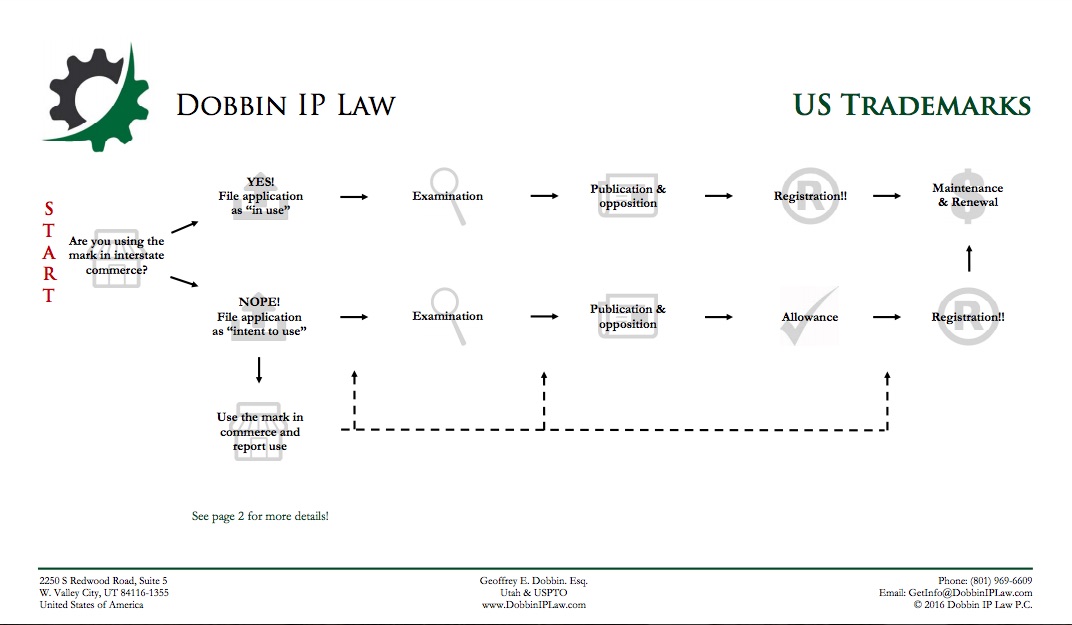Trademark Information
With Frequently Asked Questions
Utah Attorney Protecting Your Brand Nationally
Your trademark is your identity. Just like you need to be vigilant in protecting your identity, you need to be vigilant in protecting your mark. Registering your trademark helps protect you from "identity" theft in the form of counterfeit goods and services and unfair competition. Registering your trademark can be a complex legal process, and having an experienced attorney can help you avoid unnecessary time, expense, and heart ache.
About Trademarks
A trademark is anything you use to identify your goods and/or services to the world, just as your own name identifies you. Most are words, some form of graphic design, or a combination of word and design. They can either be registered by the federal government or, where available, a state government. They can also be established by using the mark appropriately. Therefore, that there are two trademark classifications: common law and registered.
It is not necessary to register your mark for it to have rights – it can exist and be protectable in your home state or (wherever you used it) merely by the fact you are using it. However, there are several benefits to registering your mark. These include: a public notice of ownership, constructive use in all fifty states, a legal declaration of your rights to the mark and the ability to use it, expand it, and protect it. You can also gain the ability to more easily obtain protection for your mark in other countries.
Trademarks Symbols and Types
There are several different trademark symbols. They include:
- ® This symbol means the mark is federally registered. It may be used for either a trademark or service mark.
- TM This symbol means that the mark is claimed. It may or may not be in the process of being registered, and may even be registered. It also may or may not be protectable. The TM marking is generally used for physical goods.
- SM Like the TM symbol, this symbol means that it is claimed, and generally refers to a service.
Trade Dress
The image and identity you create as a whole when packaging your goods for sale or when advertising your serves is called a "trade dress." While not a mark, per se, a distinctive trade dress is protectable under Federal and most state laws.
Contact an Experienced Trademark Attorney
If you would like more information regarding trademarks, how they work, and the registration process, please visit our Trademark FAQ section below for answers to common questions.
For additional questions, or including questions regarding your particular mark, do not hesitate to contact us. We would love to schedule your complementary strategy session and help you through any questions or problems you might have.
Frequently Asked Questions About Trademarks
Questions About Trademark Registration?
Schedule a free consultation to discuss your brand protection needs with an experienced trademark attorney.
Schedule a Strategy Session
